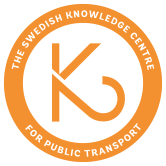When exploring preferences of existing and potential public transport passengers, it is relevant to acknowledge differences between different geographic scales: local, regional and interregional. However, the boundaries between these categories remain unclear. Some previous attempts have been made to define regional travel – and hence local and interregional travel – but the resulting definitions are somewhat vague and use diverse sets of metrics. In order to sort the terms, this paper aims to explore the perception of the concept regional travel through a survey among public transport professionals. In total, 290 completed questionnaires were collected. All continents are represented in the survey, but with a strong concentration of responses in North America and Europe. The results emphasise the importance of maintaining a distinction between functionality and technology, meaning that factors such as vehicle type or speed should not be included in the definition. Instead, the survey indicates a clear preference for either an administrative or a functional definition, depending on the purpose. The functional definition is argued to best fit the purpose of exploring passengers’ preferences, and hence the following working definition of regional public transport can be adopted: Regional public transport targets passengers travelling between separate urban areas or to rural areas, and a majority of the trips are made on a regular basis (daily to weekly in general).
